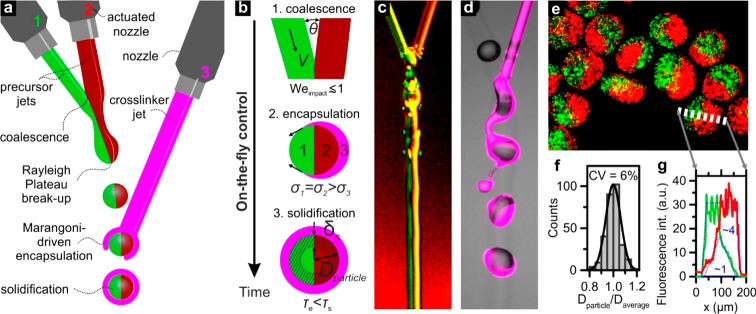Figure 1.
Concept of 3-jet in-air microfluidics (IAMF) for Janus microparticle production. (a) A liquid Janus microjet is formed by coalescing two distinct liquid microjets (green and red) that contain a solid precursor. Piezo-electric microjet actuation generates a train of monodisperse Janus droplets that are subsequently coalesced with a third microjet (magenta) that contains a cross-linker. (b) The key stages of Janus microparticle formation during flight include: (1) Jet–jet and drop–jet coalescence, which requires Weimpact ≲ 1; (2) surface tension gradient-driven encapsulation of the Janus droplets, which requires σ1 = σ2 > σ3; and (3) solidification, such that τimpact< τsol < τin-air. (c) High-speed microphotograph of two microjets forming a Janus microjet (red and green) with limited initial diffusion. (d) The third microjet (magenta) can encapsulate the in-air formed train of monodisperse droplets, as revealed by high-speed (fluorescence) microscopy. (e) The collected microparticles are characterized by (f) a monodisperse size distribution, as well as (g) a clear compartmentalized morphology. The dotted blue curves indicate that mixed area ∼4× smaller than the total microgel area, which corresponds to a mixed volume of ∼1/8 of the microgel’s total volume.

